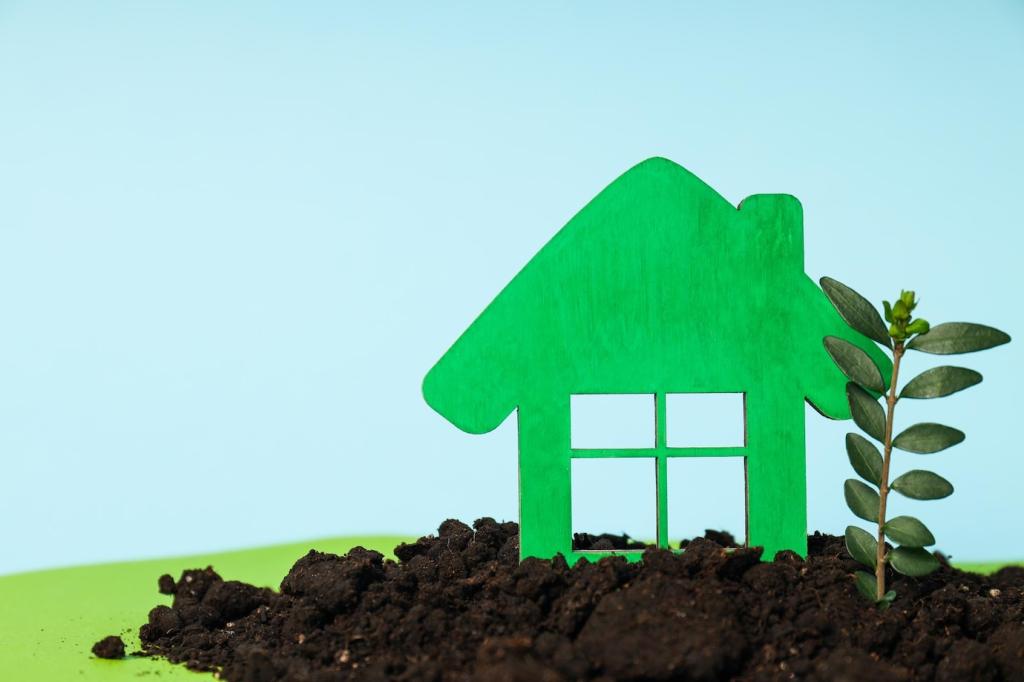Choosing Green Materials for Home Insulation
Understanding Green Insulation
What Makes Insulation Green?
Green insulation stands apart because of its sustainable sourcing, manufacturing, and end-of-life disposal. Materials classified as green are often composed of rapidly renewable or recycled sources, such as sheep’s wool, cellulose from recycled paper, or cotton from denim scraps. The key is that production of these materials generates minimal pollution and resource depletion. In addition, green insulation avoids toxic adhesives, binders, and chemical flame retardants common to many traditional products. End-of-life recyclability or safe biodegradability is also essential, ensuring minimal long-term environmental impact.
Health Benefits of Green Insulation
Beyond environmental considerations, green insulation materials can have significant benefits for household health. Traditional insulation options sometimes contain formaldehyde and volatile organic compounds (VOCs), which can off-gas into a home’s indoor air and contribute to respiratory issues or allergic reactions. In contrast, most green insulation materials are non-toxic and low in emissions, helping to create a safer and more comfortable indoor environment. Enhanced airflow and humidity regulation are other benefits offered by certain eco-friendly insulations, further supporting occupant wellbeing.
The Role of Energy Efficiency
Energy efficiency is at the core of insulation’s environmental impact. Green insulation is engineered for effectiveness, often meeting or exceeding the thermal resistance (R-value) of conventional products. A well-insulated home requires less energy for temperature regulation, leading to reduced fossil fuel use and greenhouse gas emissions. By maximizing energy efficiency, green insulation not only saves on utility costs but also aligns your home with best practices for sustainability and climate action. Making an informed insulation choice thus supports both your economic and environmental goals.
Popular Types of Eco-Friendly Insulation

Cellulose Insulation
Cellulose insulation is one of the most widely used eco-friendly materials, primarily composed of recycled newspaper or cardboard treated with non-toxic fire retardants such as boric acid. It offers impressive thermal performance and is typically blown into wall cavities or attics, allowing for comprehensive coverage while minimizing air gaps. Cellulose production requires less energy compared to fiberglass, and its high post-consumer content diverts waste from landfills. As a result, this material reduces both resource consumption and greenhouse gas emissions, while also offering reliable energy savings for homeowners.

Sheep’s Wool Insulation
Sheep’s wool is a natural, renewable insulation material known for its outstanding moisture absorption and thermal regulation. Sourced from sheep farms, it undergoes minimal processing and does not require harsh chemicals to perform effectively. Wool fibers are naturally fire-resistant, sound absorbent, and resistant to mold or mildew growth, making them ideal for healthy indoor environments. Sheep’s wool also continues insulating even when damp, unlike many synthetic options. Choosing wool insulation supports sustainable agriculture and promotes a closed-loop, biodegradable product life cycle.

Cotton (Denim) Insulation
Cotton or denim insulation repurposes manufacturing scraps from the textile industry, transforming discarded denim into high-performance batt insulation. This material is free from chemical irritants, making it safe to handle without special equipment. Its dense structure provides superior soundproofing as well as thermal insulation. The manufacturing process employs minimal water and energy inputs, and the product is often treated with natural, non-toxic pest and fire retardants. By selecting cotton insulation, homeowners can support recycling efforts and minimize the ecological impact associated with conventional insulation production.
Factors to Consider When Choosing Green Insulation
The effectiveness of insulation is often measured by its R-value, indicating how well it resists heat flow. Higher R-values correspond to greater insulating ability. While green materials have made significant strides, their performance characteristics can vary between types and brands. It’s important to select a product with an R-value suitable for your climate and the particular area of your home being insulated. Some materials excel in colder environments, while others are more effective at regulating indoor temperatures in hot climates. Always match the material’s performance to your specific needs and local building codes.

